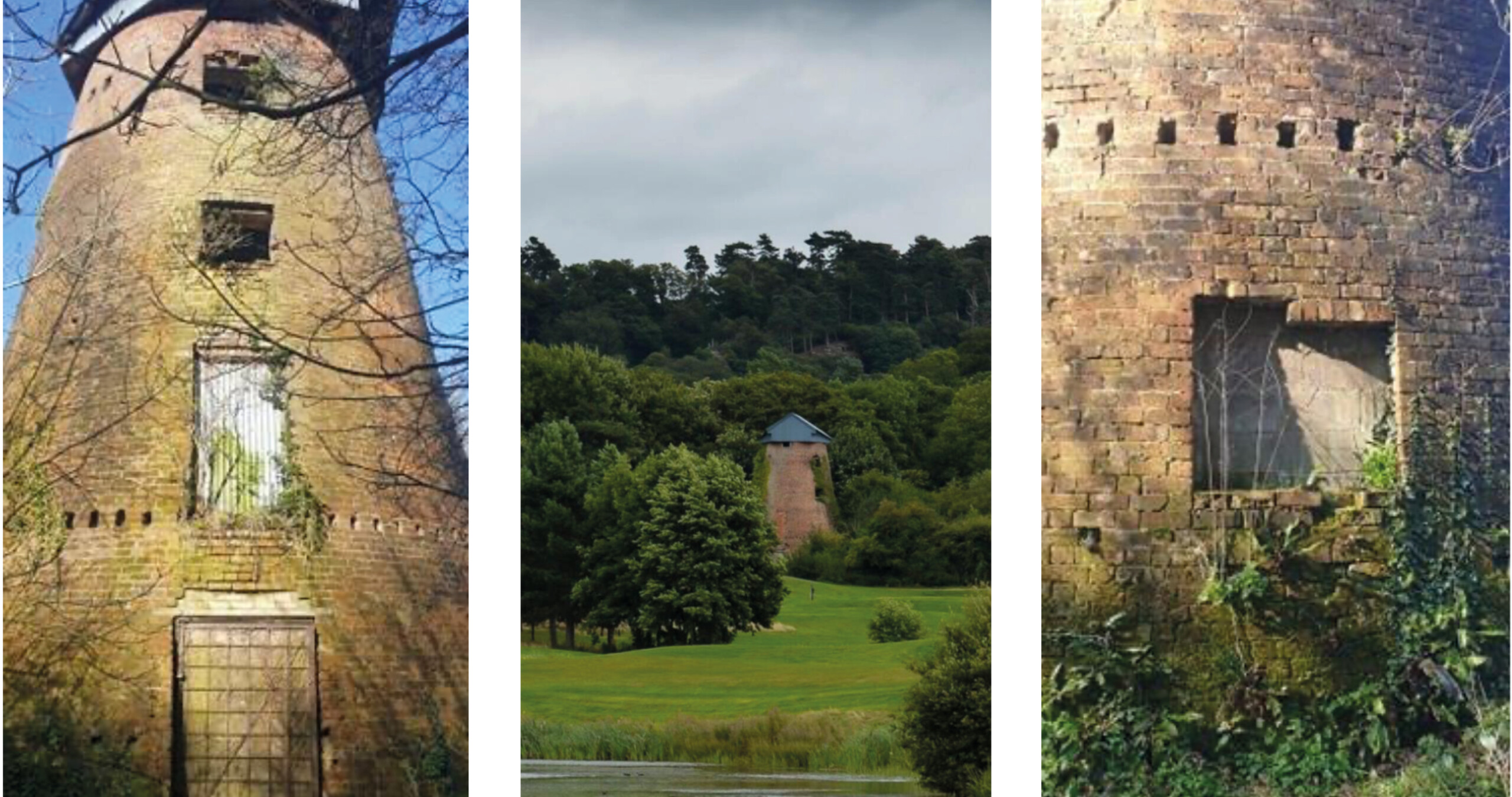Caitlin Osborne on her CMP for Hawkstone Windmill
Caitlin came in second place in our ‘Living Buildings’ student prize for the best Conservation Management Plan. Here she outlines the background and reasons why she chose to write about such a fascinating site.
I chose to do a CMP on Hawkstone Windmill for several reasons. Firstly, the idea of a windmill interested me, it wasn’t something I had really come across before and its uniqueness got my attention when I was scouring the Heritage at Risk Register for a building to choose. The more I researched into the windmill the more unique it became; it wasn’t a working windmill at all, it was actually built as part of a Dutch scene for the Hawkstone Park Follies. Unfortunately for the windmill, it now lies outside the boundaries of these Follies which also happen to be a Grade I listed landscape. This was a real tragedy as a few years prior, all the follies included in the listed landscape had been conserved and are currently under a maintenance plan to ensure their protection; the same safeguarding was unfortunately not extended to the windmill that now hides away in the trees of a nearby golf course with its internal machinery totally collapsed.
The windmill presented plenty of opportunities for its future use and the fact that it was never a working windmill meant I didn’t have to go down the traditional ‘restoration’ route which was exciting. However, I knew for it to be worth conserving and not be at risk of future dereliction it had to be economically viable and engage the local community, so this was something I often thought about throughout my options appraisal. I researched into other windmills around the country and how they had been adapted for modern day usage eventually finding similar listed windmills that had been converted by the National Trust into holiday cottages. This research proved to me that I didn’t have to simply conserve the windmill, I could be more creative with the site without damaging its significance.
My passion for the historic environment and architecture has probably been with me subliminally since I can remember. My dad is bricklayer so has always encouraged me to look up at buildings and admire the craftsmanship whenever we have been out and about In addition, I am fortunate enough to have grown up in Shrewsbury, a beautiful medieval market town with a wealth of Tudor timber framed buildings, Georgian town houses and the first skyscraper in the world, so I have always been surrounded by the historic environment. It didn’t take much research to know that the course in Conservation of the Historic Environment at Birmingham City University was the perfect fit for me to do my masters when I finished my History degree at the University of Chester. The blend of practical and theoretical lectures was the main selling point and although most of the practical lectures have unfortunately had to be postponed due to Covid-19, I still feel as though I have gained invaluable skills and knowledge on conservation from amazing and dedicated tutors and guest lecturers.
At the moment I am one of the many on furlough from the National Trust where I work as a Trainee Conservation Assistant and Interpretation Assistant at Powis Castle. It is a fantastic place to work and I really enjoy engaging with the public about the conservation work that goes into keeping a National Trust property going. In addition, I am also volunteering for the Churches Conservation Trust and rewriting all the interpretation for St. Mary Magdelene’s Church in Shrewsbury which keeps me busy when I’m not writing assignments. Finally, I am fortunate enough to currently have work experience with a conservation brick layer in Shrewsbury. We are currently working on repairing a section of the Town Walls that had unfortunately been rebuilt using cement instead of a lime mortar which has caused the wall to crack and bow out. The work is hard and physical but is an eye opener into just one of the many jobs in conservation that there are!
